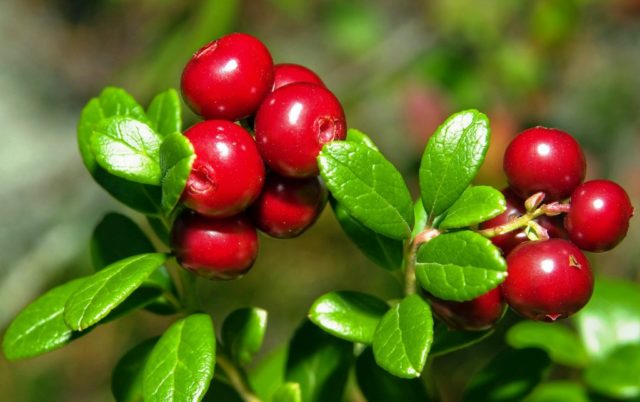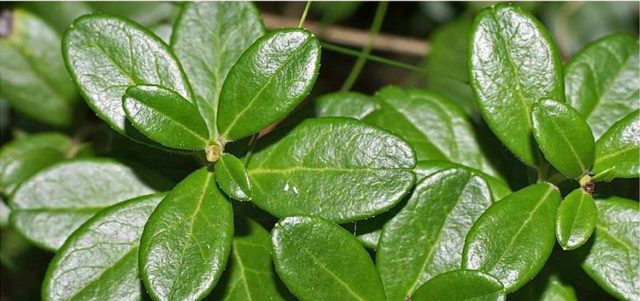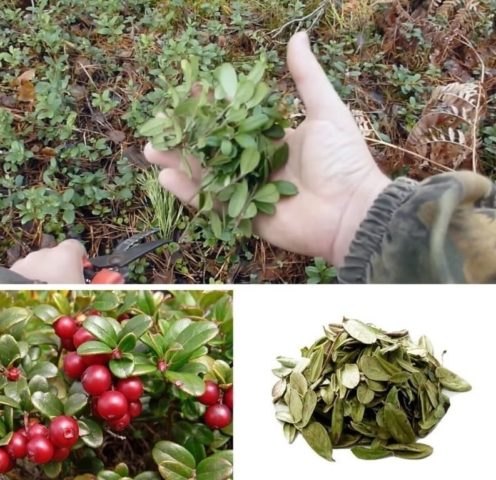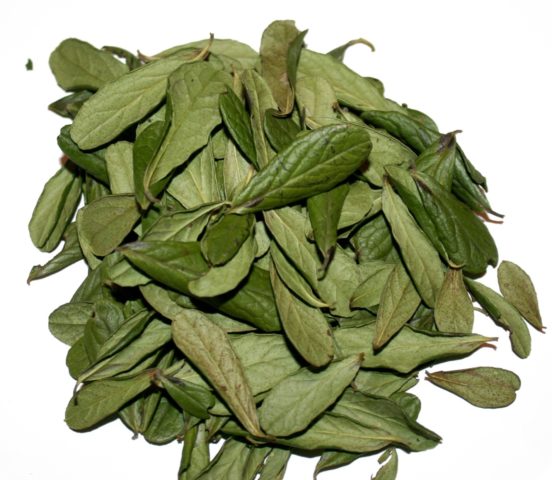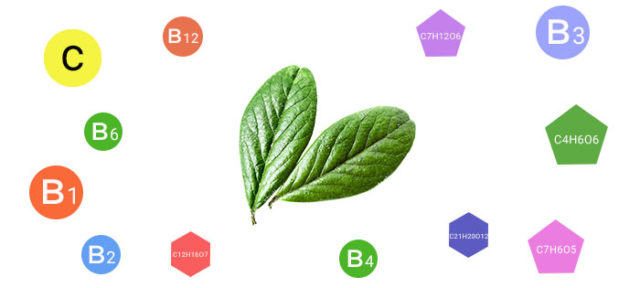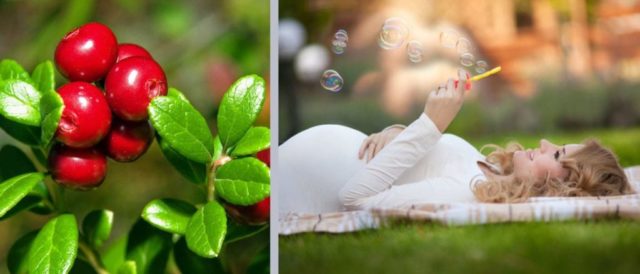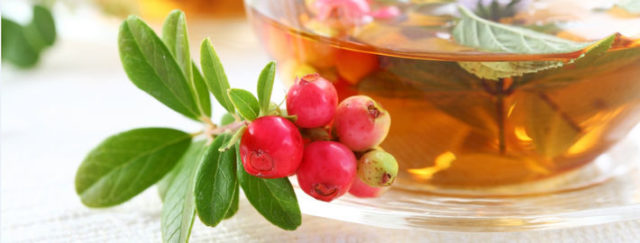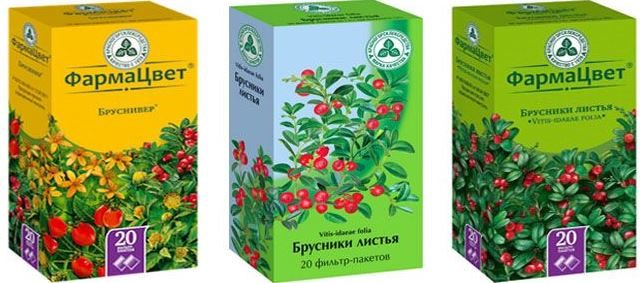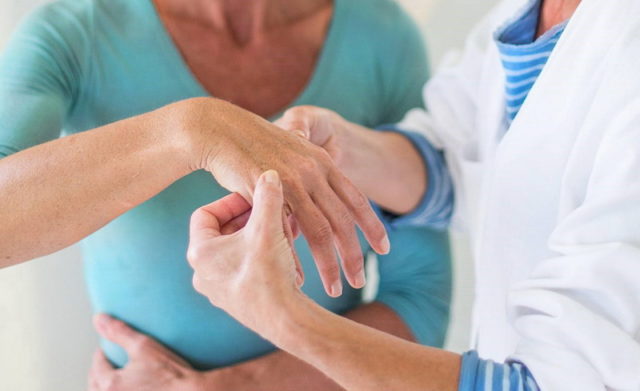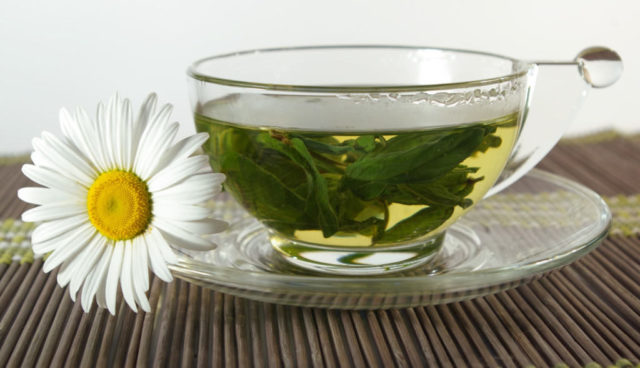Content
- 1 Lingonberry leaf description
- 2 What are the benefits of lingonberry leaves for the body
- 3 How to brew a lingonberry leaf
- 4 Lingonberry leaf: useful properties and contraindications
- 4.1 Lingonberry leaves with cystitis
- 4.2 Recipe for cystitis
- 4.3 Lingonberry leaf for edema
- 4.4 Recipe for edema
- 4.5 Lingonberry leaves for the buds
- 4.6 Lingonberry leaf for prostatitis
- 4.7 Lingonberry tea for the prevention and treatment of prostatitis
- 4.8 Lingonberry leaf for arthritis
- 4.9 Joint Treatment Prescription
- 4.10 Lingonberry leaf for weight loss
- 4.11 Slimming recipe
- 4.12 Lingonberry leaves for gastritis
- 4.13 Prescription for treating gastritis with normal or low acidity
- 4.14 Lingonberry leaves for urolithiasis
- 5 Limitation and contraindications for use
- 6 Conclusion
Lingonberry leaves are as useful as berries. They contain many vitamins, trace elements, biologically active substances, and in a fairly strong concentration. This makes lingonberry leaves more of a medicinal or prophylactic agent than a pleasant and healthy addition to tea. Eating them uncontrollably, moreover, in unlimited quantities can be hazardous to health.
From a biological point of view, lingonberry is a shrub - a woody plant, characterized by low, often creeping, strongly branching shoots without a main trunk. Scourges up to 100 cm in length rise 15-25 cm above the ground and live from 5-7 (wild species) to 10-15 (cultivated varieties) seasons, while the age of the rhizome can reach two hundred years.
Lingonberry leaf description
Lingonberry in natural conditions prefers to grow in coniferous forests and dry peat bogs, often in the vicinity of blueberries, blueberries. But berry-growers are well adapted for life in the tundra, arctic zone, high mountains, mixed forests, along the edges of swamps. In the 60s of the XX century, cultivated lingonberry plantations began to be laid, where varietal plants with larger berries, but containing slightly less nutrients, were planted.
Small leathery leaves from 0.5 to 3 cm long, no more than 1.5 cm wide are arranged in regular order, on short petioles, densely dotted with flexible shoots. They are oval in shape, dense, tough, with curved edges, they are painted dark green, do not fall off in the fall, hibernate under the snow. Young leaves are lighter in color. The reverse side is pale, dotted with small black or dark brown pits, in which there are special cells that collect moisture.
When the lingonberry leaf is harvested for treatment
Even among herbalists, certified biologists and phytotherapists, there is no consensus about the timing of the collection of lingonberry leaves. The only thing they agree on is that harvesting cannot be carried out during the flowering and fruiting of the culture.
Without going into details, lingonberry leaves are collected:
- Immediately after the snow melts.
- In the spring, before the buds appear (April - mid-May) or in the fall, after picking the berries.
In fact, lingonberry leaves have beneficial properties all year round. Only during flowering and fruiting are all the forces of the plant directed to the formation of ovaries.Lingonberry draws up resources for ripening berries, emptying the "pantries" of other vegetative organs. After all, fruiting for a plant is the same as procreation for animal organisms.
Sometimes it is advised to cut off the tops of the shoots, and then remove the leaves from them, but it should be remembered that lingonberry is not a herbaceous plant. Its branches grow back slowly. If you cut off the shoots completely, the berries in this place will not appear soon.
When collecting leaves for your own use, it is best to only pick them off. You should hold the shrub with your hand so as not to pull the whole plant out of the ground, because the root system is shallow. It is impossible to carry out a mass collection like that. In this case, it is better to trim the shoots selectively.
The collection of raw materials is carried out in sunny dry weather after the dew has dried. This should not be done near highways, airports, high-voltage lines, factories, and in areas contaminated with radiation and heavy metals. In order for the lingonberry leaf to heal, and not cripple, you should take it in an ecologically clean area.
How to dry a lingonberry leaf at home
In addition to the fact that the healing effect of lingonberry leaves collected during the flowering and fruiting period is much lower than that harvested in the autumn-spring period, it is almost impossible to dry them correctly. They will still turn black and lose all medicinal properties.
It is easiest to dry the leaves collected from the snow or spring. They are laid out in a thin layer in a warm, well-ventilated place, where the direct rays of the sun do not fall. During drying, the raw material must be turned over frequently.
Correctly dried lingonberry leaves retain their green color. They are stored in linen bags, cardboard boxes with holes or wooden boxes, the bottom of which is lined with paper. Lingonberry leaves lose their medicinal properties after 3 years.
On sale, especially in regions where lingonberry does not grow, shoots of incomprehensible color collected in bunches are often found. You should think carefully before using them for treatment - they are clearly not dried correctly.
It is undesirable to use an oven to prepare medicinal raw materials - even if you set the lowest temperature, the loss of nutrients will be great. Special dryers are much better, but still, it is better to give the lingonberry leaves time to wilt and dry naturally.
What are the benefits of lingonberry leaves for the body
The use of lingonberry leaves can alleviate the condition in many diseases. Their beneficial properties are due to their composition. Lingonberry leaves contain:
- B vitamins - B1, B3, B6, B9, B12.
- Lingonberry greens contain more ascorbic acid (vitamin C) than other marsh berries.
- Microelements such as manganese, iron, potassium, calcium, magnesium, phosphorus, sodium.
- Fresh lingonberry leaves contain up to 9% of arbutin glycoside (vaccine), dried leaves - 5-7%. This substance has a disinfectant and antimicrobial effect.
- Acids: cinchona, tartaric, ellagic, gallic, nicotinic (vitamin PP, B3). Of particular note is benzoic, which is a strong antimicrobial and antifungal agent, and ursular, which is involved in cholesterol metabolism.
- Tannins.
- Antioxidants
- Phytoncides capable of destroying Staphylococcus aureus.
- Phenolic compounds such as tannin.
Lingonberry leaves are a medicine recognized not only by non-traditional, but also by official medicine. They are a part of medicinal and cosmetic products, food supplements.
The healing properties of lingonberry leaves for women
Of course, women take a decoction of lingonberry leaves in the same way as men, for general strengthening of the body and treatment of diseases. But there are specific conditions that are inherent only in the beautiful half of humanity.
First of all, it is pregnancy. Expectant mothers can be prescribed lingonberry leaves:
- for general strengthening of the body;
- as a diuretic and anti-inflammatory agent for edema and other problems with the genitourinary system;
- to lower blood pressure and strengthen blood vessels;
- with anemia;
- to reduce nervous tension;
- as an antiviral and antipyretic agent.
And although with edema, the effect of the decoction is considered safer than taking many medications, you should definitely consult your doctor. In some cases, lingonberry can harm the embryo.
During feeding, the health benefits of lingonberry tea are questionable. Together with the mother's milk, substances with a diuretic effect enter the child's body. Does a newborn need them? Here you definitely need a doctor's consultation.
Lingonberry leaves provide relief for women during menopause. They can:
- reduce sweating;
- help to cope with neuroses;
- prevent venous stasis.
In addition, decoctions and infusions are often prescribed to women:
- those who want to lose extra pounds;
- with scanty menstrual or uterine bleeding (only by appointment and under the supervision of a doctor who prescribes the method of preparation of the drug and dosage);
- suffering from nervous exhaustion;
- strong hot infusions are taken for painful menstruation;
- with inflammation of the appendages.
The healing properties of lingonberry leaves for men
With age, many men develop prostatitis. This disease brings a lot of physical and mental suffering to the stronger sex, and ordinary lingonberry tea can alleviate the condition. Properly brewed, it normalizes the outflow of urine, relieves inflammation, and improves general condition.
You can not be treated with lingonberry leaves for men:
- low pressure;
- with urolithiasis.
Is it possible for a lingonberry leaf for children
Opinions about the age at which children can take infusions and decoctions, which include a lingonberry leaf, differ. Some healers go to extremes, and believe that the child should be 12. But more often there is advice when lingonberry leaves are advised to be taken by children from the age of three. Perhaps this is also an extreme - at such a young age there must be good reasons to give a child such a powerful remedy.
In any case, children are different, and lingonberry greens can be a harmless alternative to drugs that have serious side effects. When to start drinking decoctions, and which recipe should be used, the doctor should say.
Usually lingonberry leaves are prescribed for children:
- As a diuretic. The broth should be drunk no later than 16-17 hours to avoid nighttime involuntary urination.
- Against allergies. But first you need to make sure that the child responds normally to lingonberries. Products and herbs that are 100% hypoallergenic do not exist. Intolerance can be very severe and do not appear immediately.
- As an antipyretic and anti-inflammatory agent.
- As part of vitamin and tonic preparations.
- To lower blood sugar.
There are a few things to keep in mind:
- Children often have low blood pressure. They do not suffer from this, and over time they simply "outgrow".But lingonberry can still lower the already low pressure, and this will already be dangerous.
- Children are given decoctions and infusions at a concentration lower than for adults.
- Since the lingonberry leaf enhances the effect of antibiotics, it must be used with special care in conjunction with drugs.
Lingonberry leaf tea recipe for kids
For 1 liter of boiling water, take 1 tbsp. a spoonful of dry lingonberry leaves, leave for 5 minutes, filter. Sugar or honey is added to improve the taste. They drink warm, hot and cold, but no later than 17-00.
How to brew a lingonberry leaf
You can brew lingonberry leaves in different ways.
Decoctions
Decoctions made from lingonberry leaves have the strongest effect. The dosage and ratio of raw materials and water should be calculated by a specialist, taking into account the patient's weight, for what purposes the decoction is intended, and concomitant diseases.
General cooking rules:
- leaves are crushed or left intact;
- are poured with boiling water;
- put on fire or water bath for the period specified in the recipe;
- insist;
- are filtered;
- diluted with water;
- taken before meals as recommended by your doctor.
Infusions
Lingonberry leaves are filled with hot water and infused for no more than 6 hours. The proportions of raw materials and liquid, as well as cooking times, may vary. Often infusions consist of several components, fruits, flowers, leaves and shoots of various plants are used in them.
Teas
To make tea, lingonberry leaves or their mixture with other plant materials are poured with boiling water, infused for 5-10 minutes or drunk immediately. Proportion - 1 dessert or tablespoon per 1 liter of boiling water. Sugar or honey can be added to improve the taste.
Tea balms
The same as the previous drink, only black or green tea is added to plant raw materials.
How to drink lingonberry leaf
Usually, boiled lingonberry leaves are drunk before meals. For how long to take infusions or decoctions, the doctor will tell you. Teas and balms are consumed like a regular hot drink, but not immediately after a meal.
You cannot drink lingonberry broths, infusions, even teas or balms all the time. Usually they are used in courses - short (10-14 days) or long (3-4 weeks). The break should be at least a month.
In any case, it is better to consult a doctor about taking infusions and decoctions. Teas and balms are drunk in short courses without consulting a doctor.
It should be remembered that teas and balms must be used within 24 hours. Infusions and decoctions can be stored in the refrigerator for up to three days, but it is better to spend time and prepare a fresh drink.
Lingonberry leaf: useful properties and contraindications
Lingonberry, and in the first place - its leaves, won the fame of a plant-healer for a wide spectrum of therapeutic action. Collected in time in an ecologically clean place, they possess:
- antiseptic properties;
- relieve inflammation, in particular, relieve conditions in diseases of the musculoskeletal system;
- act as a diuretic;
- contribute to the separation of bile;
- lower the temperature;
- used as an immunomodulator;
- help to heal wounds;
- have astringent properties;
- enhance the effect of antibiotics;
- depending on the temperature of the drink, the time and method of intake, as well as the use in collections with other plants, they can have a tonic or sedative effect;
- used in the complex therapy of diseases of the genitourinary system in men and women;
- used for the prevention of urolithiasis;
- used for rinsing for diseases of the mouth and throat;
- help with vitamin deficiency;
- lower sugar levels;
- have antioxidant properties;
- help lower blood pressure;
- are included in cosmetics as a rejuvenating component;
- alleviate food and alcohol poisoning.
From what the lingonberry leaves help it is clear. But do they have any contraindications? There are no absolutely harmless remedies. Even aspirin can cause death in some diseases. Contraindications for taking lingonberry leaves:
- individual intolerance;
- low pressure;
- stones in the kidneys;
- diseases of the gastrointestinal tract, aggravated by high acidity, especially during an exacerbation;
- lactation period, if the lingonberry leaves are not included in the complex of therapy prescribed by the doctor;
- renal failure;
- postoperative period lingonberry is contraindicated in any form.
Lingonberry leaves with cystitis
Cystitis is an inflammation of the bladder. The earlier treatment is started, the easier it is to defeat the disease. In the instructions for the use of lingonberry leaves sold in pharmacies, they most often describe precisely the therapy of cystitis, one-component, or together with drugs.
Relief of the condition occurs due to:
- vitamin C, which relieves inflammation and strengthens the walls of blood vessels;
- antiseptic of natural origin arbutin, which acts as a diuretic;
- benzoic acid (anti-inflammatory).
Thanks to the lingonberry leaf, the amount of urine is increased. If you take it from the first days of the illness, the bacteria and microorganisms that provoke an exacerbation are simply flushed out of the genitourinary system.
Recipe for cystitis
A good result is obtained from the collection of lingonberry and St. John's wort leaves. They are taken in 4 tbsp. spoons, pour 1 liter of boiling water, put on fire. As soon as the mixture boils, it is wrapped in a warm blanket and allowed to brew for 2 hours. Then it is filtered and drunk per day.
Lingonberry leaf for edema
Lingonberry leaves have a diuretic effect. Along with urine, salts are excreted, which cause fluid retention in the body.
Recipe for edema
Chopped lingonberry leaves (1 tsp) are poured with a glass of boiling water. Insist 30 minutes, drink 50 ml four times a day.
Lingonberry leaves for the buds
This point should immediately begin with a warning - self-administration of lingonberry leaves for the treatment of kidney disease can be life-threatening! This should only be done by a nephrologist!
Yes, lingonberry leaves heal the kidneys. This is the next most important area of application of this herbal raw material as a medicine after cystitis. But in order to determine the possibility of therapy, dosage and method of administration, you need to be not just a doctor, but a specialized specialist.
Lingonberry has a pronounced antiseptic and diuretic effect, it activates the kidneys, cleanses them of salts and toxins. And this can cause not only a healing effect, but also lead to an exacerbation, become life-threatening. A patient with pyelonephritis taking lingonberry leaves may not know that the disease has developed into renal failure, in which this plant is strictly contraindicated!
With glomerulonephritis or stones in this organ, lingonberry preparations can also be dangerous. Only a nephrologist can prescribe them.
Lingonberry leaf for prostatitis
Inflammation of the prostate gland is one of the most common reasons why middle-aged and older men seek medical help. This unpleasant disease is divided into two large groups:
- stagnant, or non-infectious, due to low immunity, hypothermia, excessive sexual activity or abstinence, low physical activity, bad habits;
- infectious, arising not only due to the development of sexually transmitted diseases, but also in chronic tonsillitis, sinusitis, renal pathologies.
Contribute to the onset and development of prostatitis trauma, impaired blood circulation and hormonal levels.
Lingonberry leaf will help get rid of or alleviate the course of the disease due to the following properties:
- diuretic and disinfectant;
- anti-inflammatory;
- the ability to enhance immunity and activate the body's own defenses.
It is not worth treating prostatitis on your own - it can go into a chronic stage, which is difficult and long to fight. Everything should be done under the supervision of a doctor, besides, the use of lingonberry leaves is not as harmless as it might seem. But preventive tea will not harm those who have no contraindications.
Lingonberry tea for the prevention and treatment of prostatitis
Often a decrease in immunity and mood is "attached" to prostatitis. A tea drink can alleviate the condition, for the preparation of which lingonberry leaves, rose hips and rowan berries are mixed in equal proportions. Pour boiling water over one tablespoon of the collection, leave for 7 minutes and drink like regular tea.
Lingonberry leaf for arthritis
It is impossible to treat already developed arthritis only with lingonberry leaves. It will perfectly complement medications, but as an independent remedy it can be taken only if it has been prescribed by a doctor.
Limited mobility, joint pain, and their deformation can be caused not only by arthritis. Lingonberry leaves will also help with gout, moreover, they are taken in the same way. It is completely impossible to cure these diseases, but it is really possible to alleviate the condition.
The therapeutic effect is due to the anti-inflammatory properties of lingonberry. Independently, infusions, teas and decoctions are taken during remission and for prophylaxis. In an acute period, you should consult a doctor.
Joint Treatment Prescription
A teaspoon of dried lingonberry leaves is poured into half a glass of boiling water, insisted for 30 minutes, filtered, taken before meals three times a day. It is recommended to make a fresh infusion every time.
Lingonberry leaf for weight loss
The effectiveness of using lingonberry leaves for weight loss is due to the content of glycosides, which have pronounced diuretic properties. They do not burn fat, but only remove excess fluid from the body. Taking the fees, you can easily lose 2-3 kg in a month (and this is the maximum period that you can drink decoctions and infusions at a time).
At the same time, one should not forget about contraindications and the fact that together with urine, salts, trace elements and other useful substances are washed out of the body. Along with diuretics, you need to take a mineral and vitamin complex.
Slimming recipe
Lingonberry leaf (2 tablespoons) and linden flowers (1 tablespoon) pour 300 ml of boiling water and leave in a thermos for 6 hours. After that, filter the infusion and drink 100 ml 30 minutes before lunch and dinner.
Lingonberry leaves for gastritis
With gastritis, they often take lingonberry water or berries. But due to the presence of tannins in the leaves, decoctions, teas and infusions are also included in complex therapy for gastrointestinal diseases.
Prescription for treating gastritis with normal or low acidity
A teaspoon of dry lingonberry leaves is poured with a glass of boiling water. Insist half an hour, filter. Take 100 ml of the drink 20 minutes before meals.
Lingonberry leaves for urolithiasis
Nephrologists recommend lingonberry leaves only for the prevention of stone formation, but not for treatment. The statement that some part of the plant contributes to the dissolution of already existing deposits has not been confirmed. But there are cases when, under the influence of the diuretic effect of a decoction or infusion of lingonberry leaves, a large stone moved from its place and blocked the ureter.
Limitation and contraindications for use
Lingonberry leaves are considered a herbal medicine recognized by official medicine. They can bring the body both benefits when used skillfully, and harm if used uncontrollably and without thinking about the consequences.
But it is impossible to limit yourself to the list of medicinal properties and contraindications of lingonberry leaves before taking infusions and teas. There is also individual intolerance.
Hypersensitivity test
Before using the brewed lingonberry leaves inside, you need to make a concentrated infusion, moisten a clean cloth with it and tie it loosely around your wrist for 10 minutes. The bandage is removed and an antihistamine is taken at the slightest sign of allergy or discomfort, namely:
- redness;
- tingling sensation;
- itching;
- hives.
To test the sensitivity of children, the infusion is made less concentrated.
Diseases in which treatment will harm the body are listed in the item "Lingonberry leaf: useful properties and contraindications".
Restriction to use, when it is imperative to consult with your doctor, are the following factors:
- pregnancy;
- kidney disease;
- age up to 12 years;
- weight loss diets;
- taking antibiotics (lingonberry enhances their effect).
These are just those cases where the lingonberry leaf can act as a healer, if taken correctly, and a destroyer, if, through ignorance or thoughtlessness, concomitant diseases are not taken into account or the dosage is incorrectly calculated.
Side effects when taking lingonberry leaf
If all the factors are taken into account and the reception of decoctions and infusions is carried out after consulting a doctor, a hypersensitivity test is carried out, there should be no side effects. But! And where is the raw material collected? How did it dry? Was it stored?
If the collection site and storage method are difficult to verify, then gray, and not dark green leaves should serve as a signal that they should not be brewed. It is better to lose money (not so much) than health and throw away bad medicine.
And even with prolonged use of lingonberry leaves as a diuretic, the salts and other useful substances it need are washed out of the body.
Conclusion
Lingonberry leaves have a lot of useful properties, they are used in complex therapy in the treatment of many diseases. Teas and balms made from them are just delicious! But they can be used only if there are no contraindications or hypersensitivity. Better - under the supervision of a doctor.
